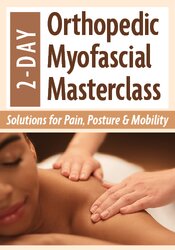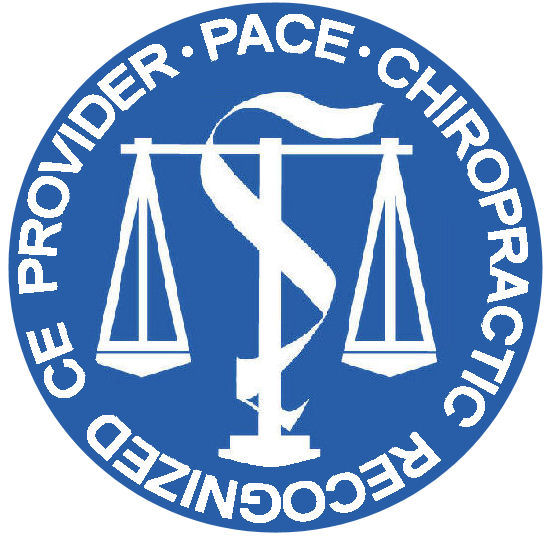

Manual therapy or hands on treatment is one of the most effective ways to earn the confidence and trust of your patient. The available techniques and clinical judgement required for appropriate selection brings a plethora of questions:
This training provides answers and guaranteed results that will bring recognition for your advanced skills in soft-tissue mobilization.
You will build a solid foundation in the leading soft tissue treatment techniques including:
Planning Committee Disclosure - No relevant relationships
All members of the PESI, Inc. planning committee have provided disclosures of financial relationships with ineligible organizations and any relevant non-financial relationships prior to planning content for this activity. None of the committee members had relevant financial relationships with ineligible companies or other potentially biasing relationships to disclose to learners. For speaker disclosures, please see the faculty biography.
NOTE: Tuition includes one free CE Certificate (participant will be able to print the certificate of completion after completing the on-line post-test (80% passing score) and completing the evaluation).
Continuing Education Information: Listed below are the continuing education credit(s) currently available for this non-interactive self-study package. Please note, your state licensing board dictates whether self-study is an acceptable form of continuing education. Please refer to your state rules and regulations. If your profession is not listed, please contact your licensing board to determine your continuing education requirements and check for reciprocal approval. For other credit inquiries not specified below, please contact cepesi@pesi.com or 800-844-8260 before the event.
Materials that are included in this course may include interventions and modalities that are beyond the authorized practice of your profession. As a licensed professional, you are responsible for reviewing the scope of practice, including activities that are defined in law as beyond the boundaries of practice in accordance with and in compliance with your profession's standards.

PESI is recognized by the PACE program of the Federation of Chiropractic Licensing Boards. This online course consists of 14.0 clock hours of continuing education instruction. Approval #.
For a list of boards that accept PACE courses, please visit this website: https://pacex.fclb.org/pages/BoardRequirements.php
**Please note that Chiropractors and/or Chiropractor Assistants must complete the post-test and evaluation and answer yes to the PACE Chiropractor question if they would like their participation submitted to PACE.
PESI, Inc. is approved by the Florida Board of Massage Therapy as a continuing education Approved Provider. Provider #50-399. This course is offered for 11.75 self-study CE hours.
*Please note: this course was not designed to meet requirements for the "relevant to and focused on massage therapy techniques, skills or protocols" category by distance learning.
CE credit is available. This self-study course consists of 11.5 continuing education clock hours for Arizona OTs and OTAs. The Arizona Board of Occupational Therapy Examiners (R4-43-203) confirms acceptance of continuing education programs relevant to occupational therapy that are approved by the American Occupational Therapy Association (AOTA).
PESI, Inc. is an approved provider with the Florida Board of Occupational Therapy. Provider Number #50-399. This course qualifies for 11.5 self-study continuing education credits.


PESI, Inc. is recognized by the Physical Therapy Board of California as an approval agency to approve providers. This self-study lecture qualifies for 11.75 continuing competency hours.
This self-study course consists of 11.75 clock hours of instruction that is applicable for physical therapists. CE requirements for physical therapists vary by state/jurisdiction. Please retain the certificate of completion that you receive and use as proof of completion when required.
PESI, Inc. is a Registered Physical Therapy Continuing Education Sponsor through the State of Illinois Department of Financial and Professional Regulation, Division of Professional Regulation. License #: 216.000270. This self-study course qualifies for 11.5 CE credit hours.
CE credit is available. This self-study course consists of 11.75 continuing education credit hours for Kentucky Physical Therapists. The rule under 201 KAR 22:045, Section 2, (2)(a) states that category 1 continued competency credits can be earned from providers approved by another physical therapy licensing agency. PESI, Inc. is a Registered Physical Therapy Continuing Education Sponsor through the State of Illinois Department of Financial and Professional Regulation, Division of Professional Regulation. License #: 216.000270.
PESI, Inc. is recognized by the New York State Education Department, State Board for Physical Therapy as an approved provider for physical therapy and physical therapy assistant continuing education. This self-study course qualifies for 11.8 contact hours.
PESI, Inc. is an approved provider with the Illinois Division of Professional Regulation, Provider Number: 216.000270. This intermediate course is approved by the North Carolina Board of Physical Therapy Examiners by virtue of PESI Inc. approved provider status with the Illinois Division of Professional Regulation. This course qualifies for 11.5 continuing education hours.
The Pennsylvania State Board of Physical Therapy recognizes approval by all other state boards. This self-study activity consists of 11.75 clock hours of instruction that is applicable for physical therapists.
This self-study activity is provided by the Texas Board of Physical Therapy Examiners Accredited Provider #2406032TX and meets continuing competence requirements for physical therapist and physical therapist assistant licensure renewal in Texas. Instructional Level: Intermediate. This activity will provide 11.75 CCUs. The assignment of Texas PT CCUs does not imply endorsement of specific course content, products, or clinical procedures by TPTA or TBPTE. Full attendance is required; no partial credits will be offered for partial attendance.
This course is designed to meet the Utah DOPL Rule R156-24b-303b.2.c.iv - A commercial continuing education provider providing a course related to the practice of physical therapy. Please retain a copy of the advertising brochure and your certificate of completion to provide to your board should this be requested of you. This self-study activity consists of 11.75 clock hours of continuing education instruction.
CE credit is available. This course consists of 11.75 continuing education credit hours for Vermont Physical Therapists. The Board confirms acceptance of continuing education programs that are recognized by other state physical therapy licensing boards. PESI, Inc. is a Registered Physical Therapy Continuing Education Sponsor through the State of Illinois Department of Financial and Professional Regulation, Division of Professional Regulation. License #: 216.000270.
CE credit is available. This self-study course consists of 11.75 hours of type 2 continued competency credit for Virginia Physical Therapists and Physical Therapy Assistants. Regulation 18VAC112-20-131, Section B, (2) states that up to ten type 2 continued competency credits can be earned by completing independent study activities related to the clinical practice of physical therapy.
This self-study activity qualifies for 11.75 continuing education clock hours as required by many national, state and local licensing boards and professional organizations. Save your activity advertisement and certificate of completion, and contact your own board or organization for specific requirements.
| File type | File name | Number of pages | |
|---|---|---|---|
| Manual - Orthopedic Myofascial Symposium: Solutions for Pain, Posture & Mobility (59.7 MB) | 264 Pages | Available after Purchase |

Dr. Theresa Schmidt is an orthopedic physical therapy specialist and massage therapist integrating traditional and alternative medicine with emphasis on manual therapy, precision exercise, wellness, Reiki, hypnosis, and mindfulness. She presented for NASA/Inomedic, Johns Hopkins, Cleveland Clinic, Vanderbilt Med, Wake Med, and professional associations. She received her doctorate at UNE and served as faculty at Touro PT Programs and CUNY Queens Colleges in NY. She is a published author, Expert Consultant, Reiki Master Instructor, and hypnotherapist in private practice at Educise® in New Hampshire. www.educise.com.
Speaker Disclosures:
|
2-Day Orthopedic Myofascial Masterclass: Solutions for Pain, Posture & Mobility
Copyright: 02/02/2023 - Product Code POS065158 |
Access never expires for this product.
Visit our FAQ page at www.pesi.com/faq or contact us at www.pesi.com/info
Satisfaction Guarantee
Your satisfaction is our goal and our guarantee. Concerns should be addressed to: PO Box 1000, Eau Claire, WI 54702-1000 or call 1-800-844-8260.
ADA Needs
We would be happy to accommodate your ADA needs; please call our Customer Service Department for more information at 1-800-844-8260.
PESI Mobile App
Access CE trainings on your phone or tablet through our free mobile app. Choose video or audio-only versions of online courses from the world’s best instructors, and complete your CE requirements anywhere, anytime, at your own pace.
Please wait ...